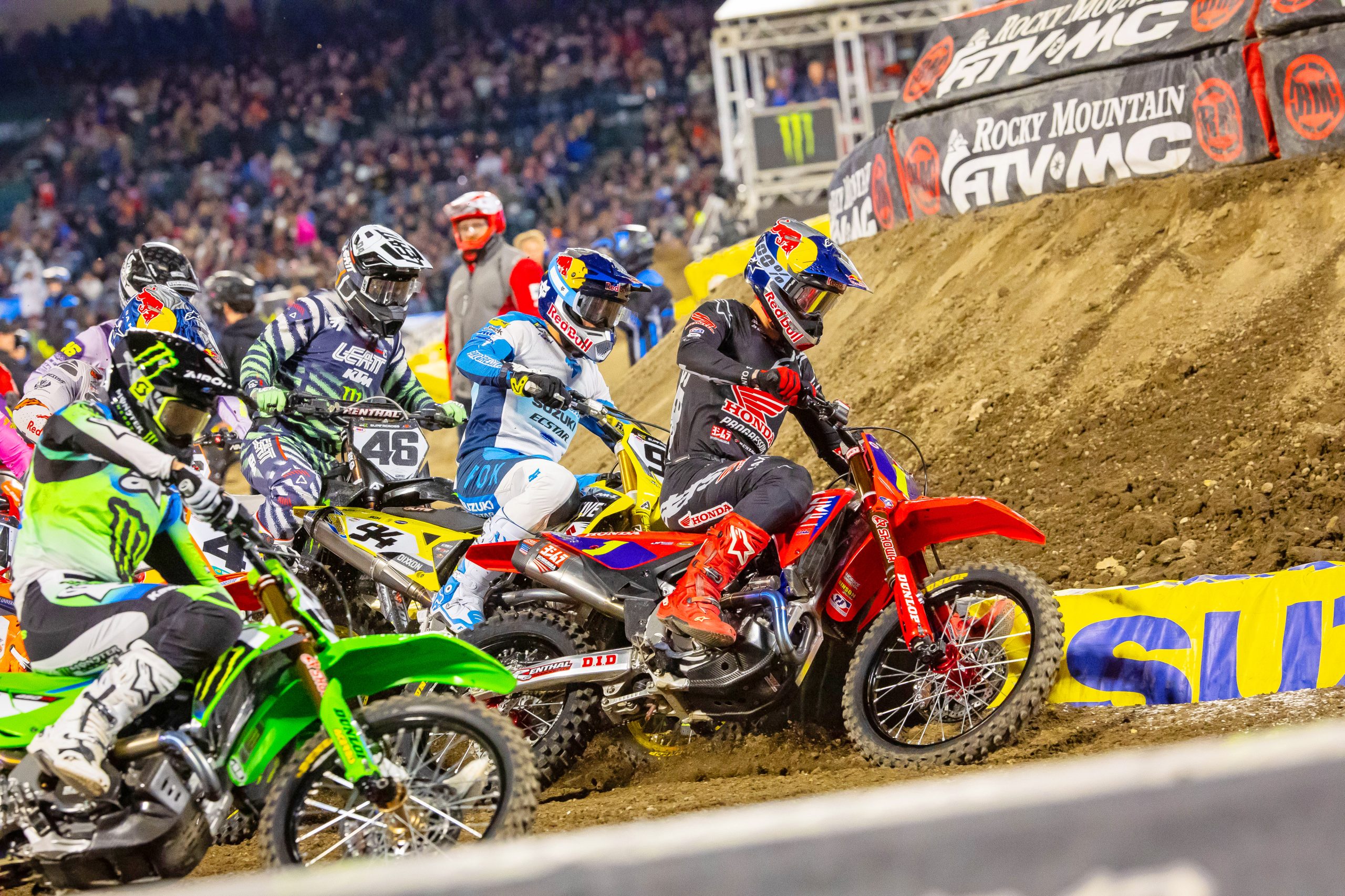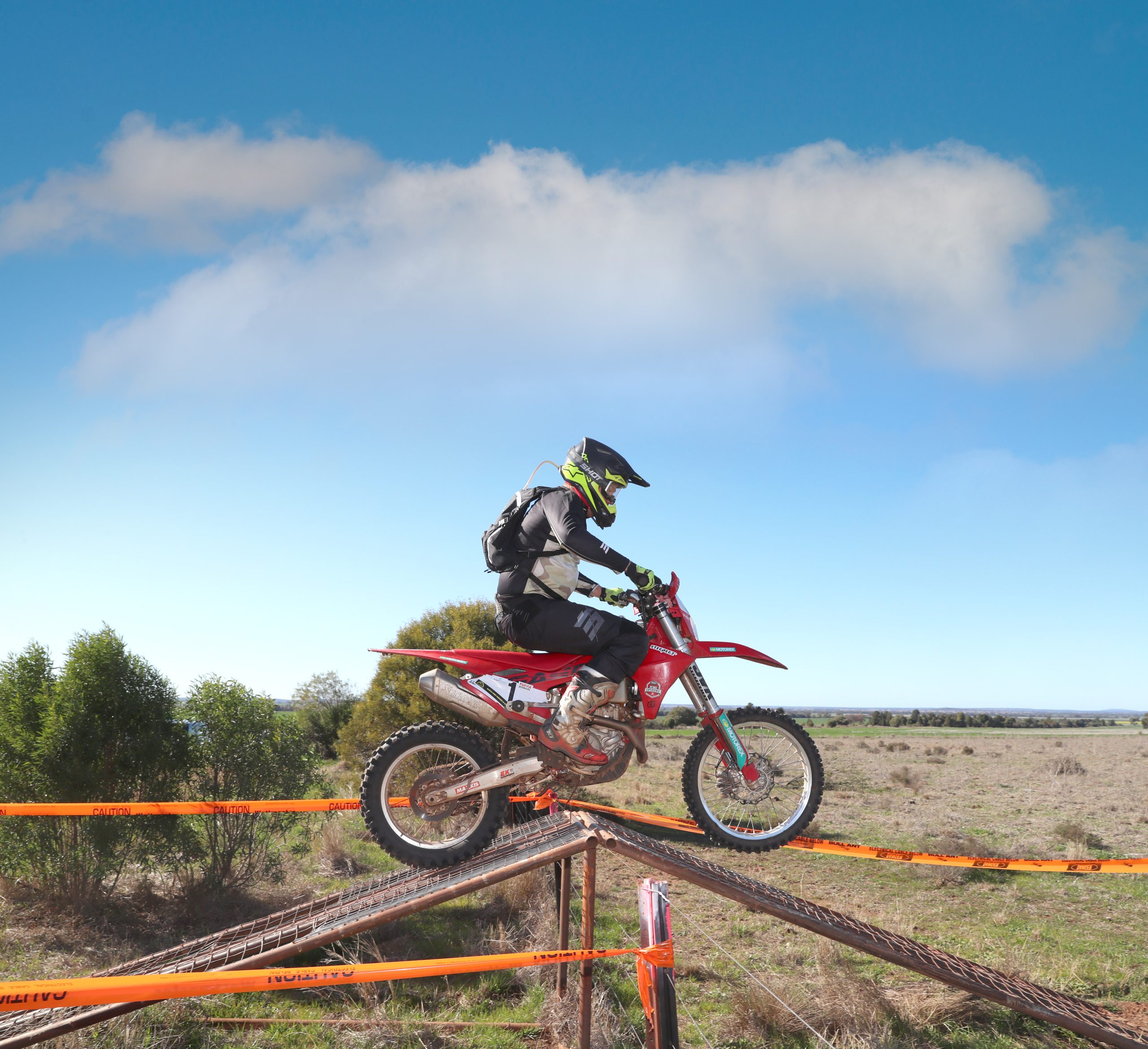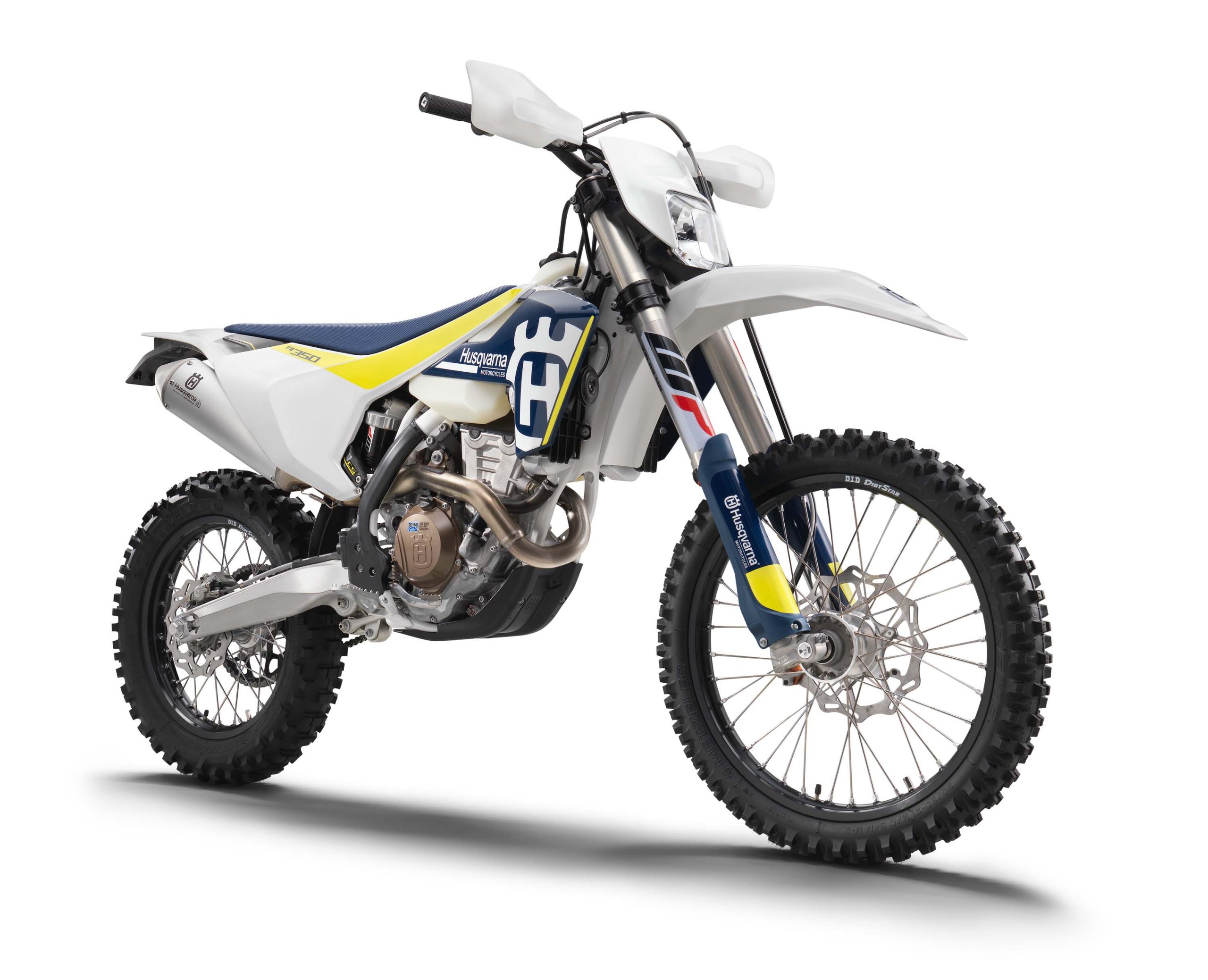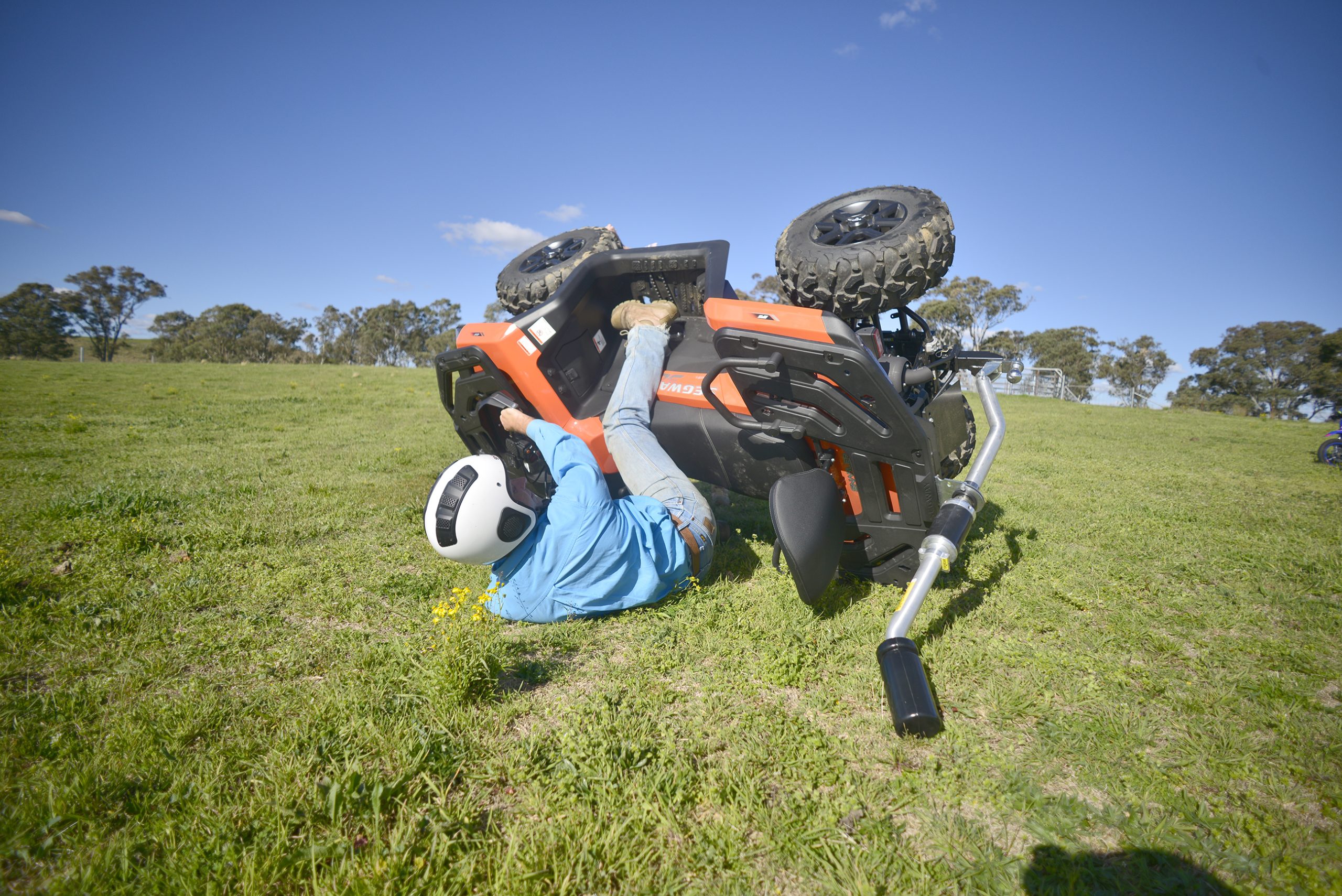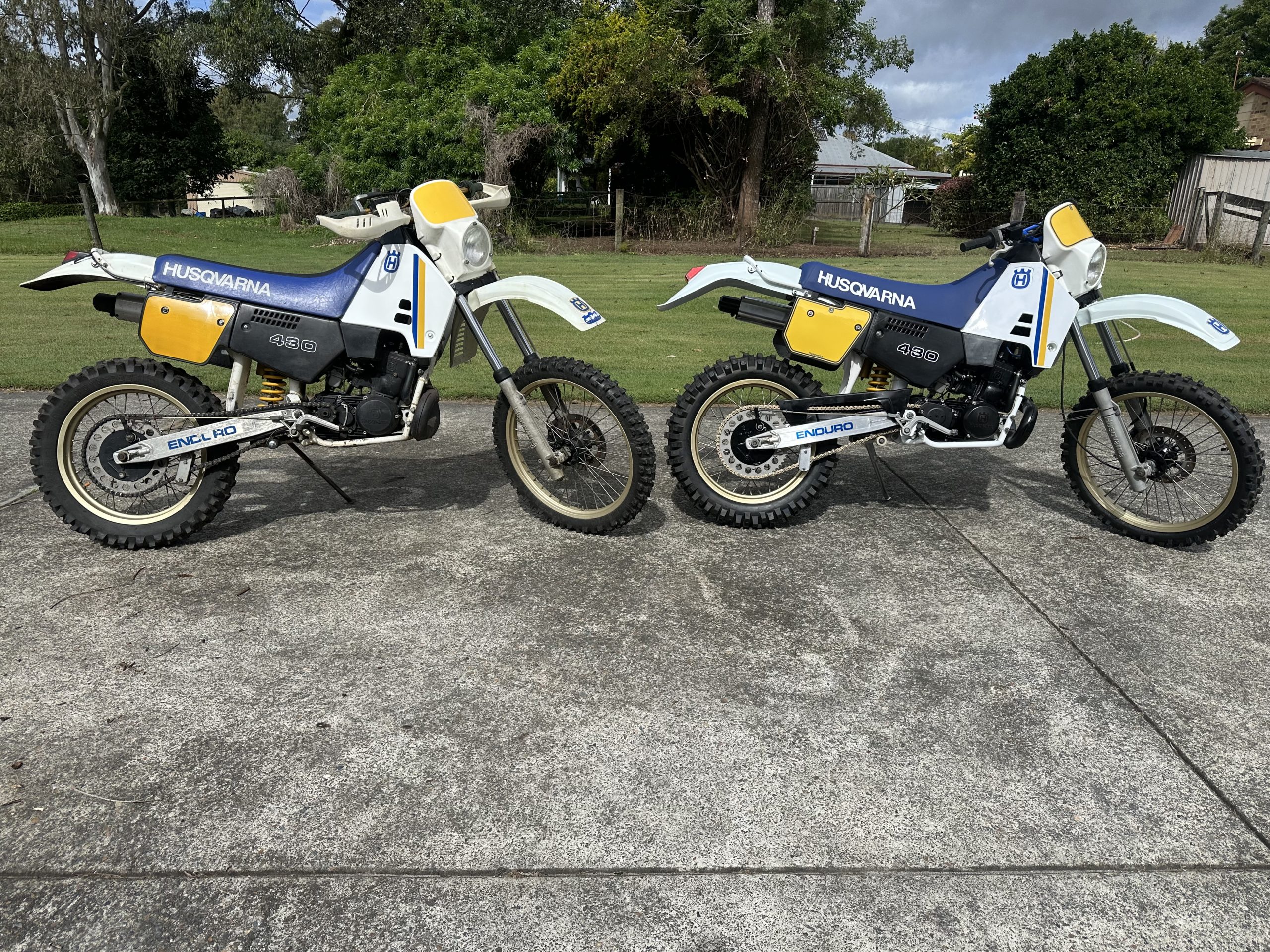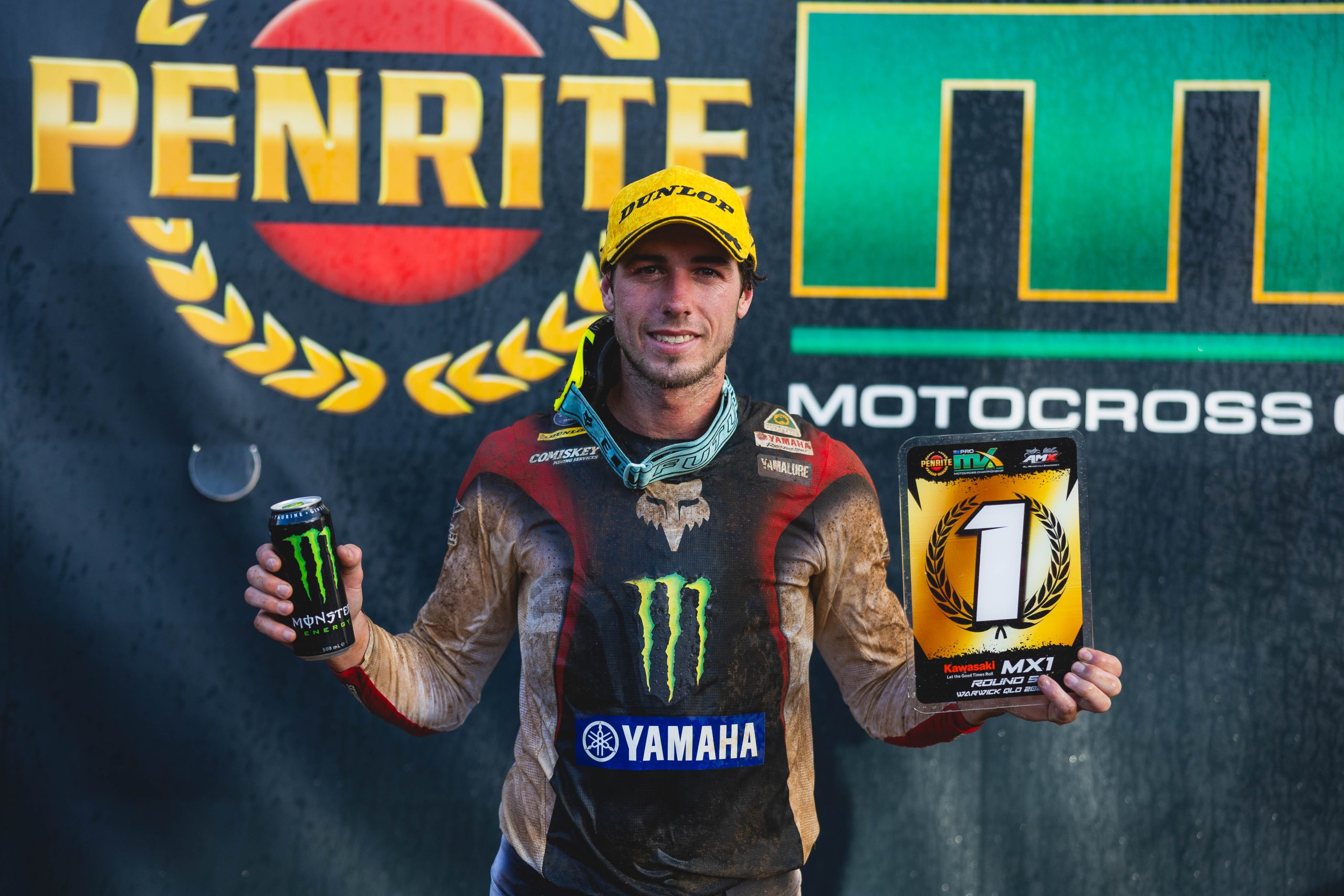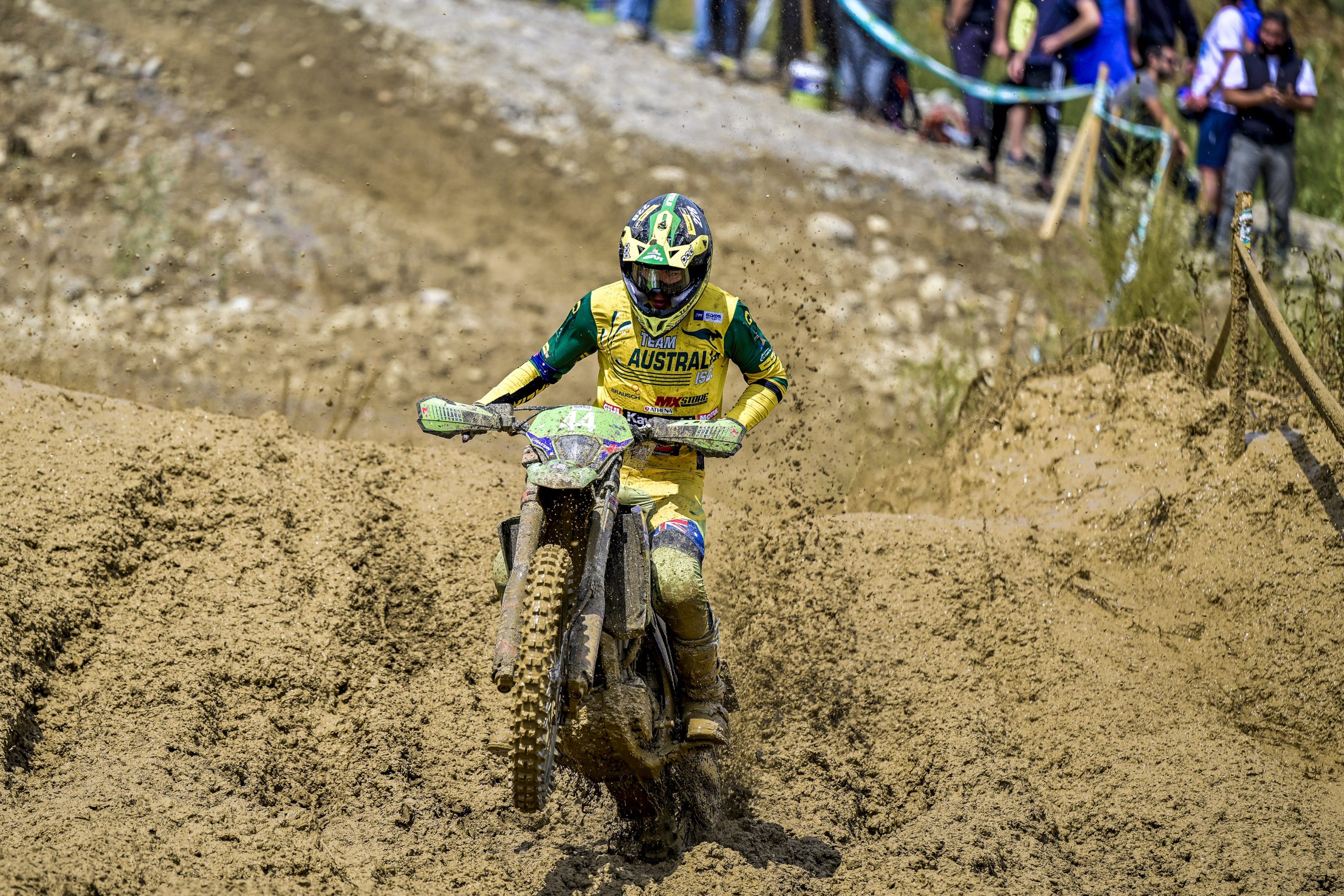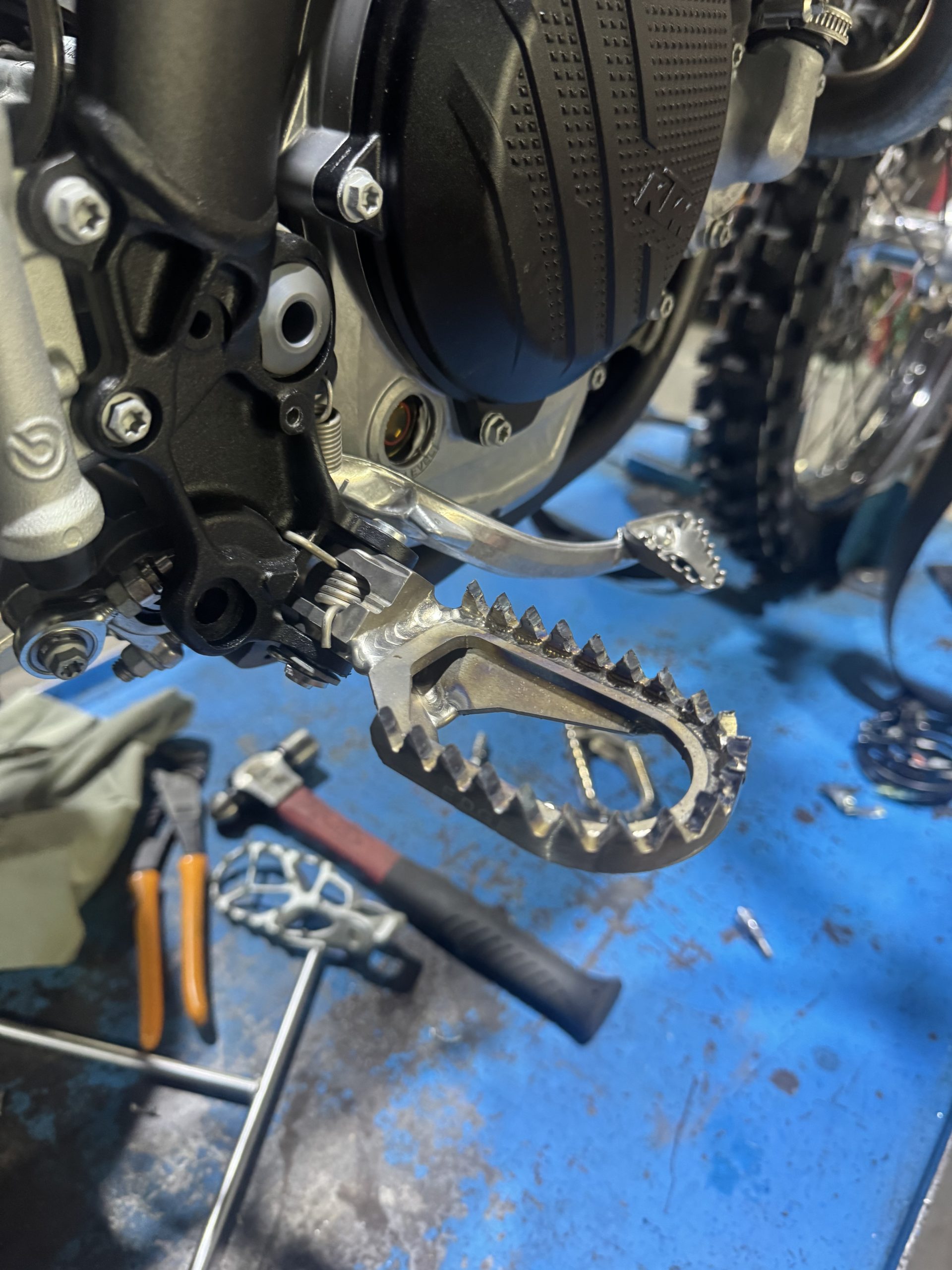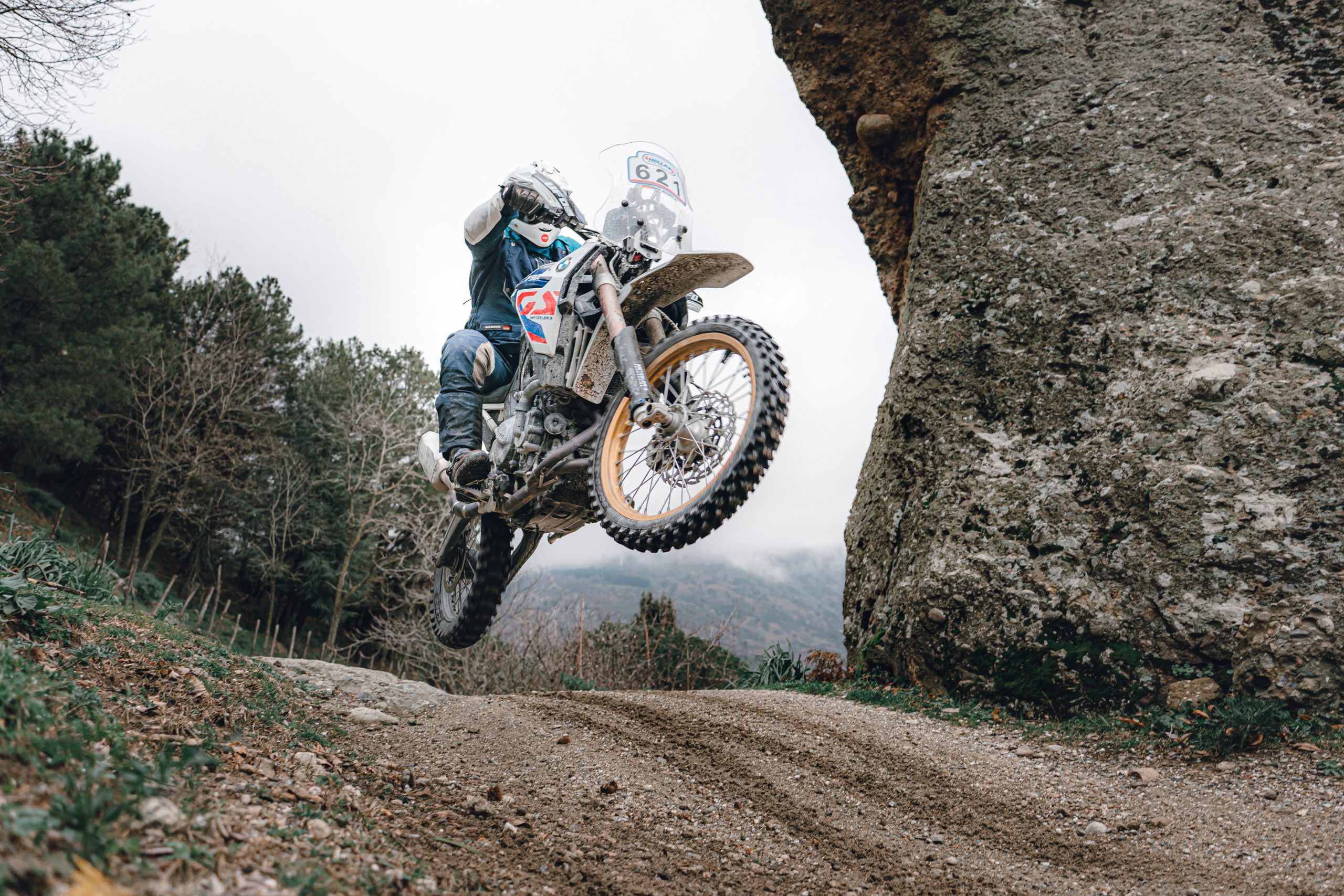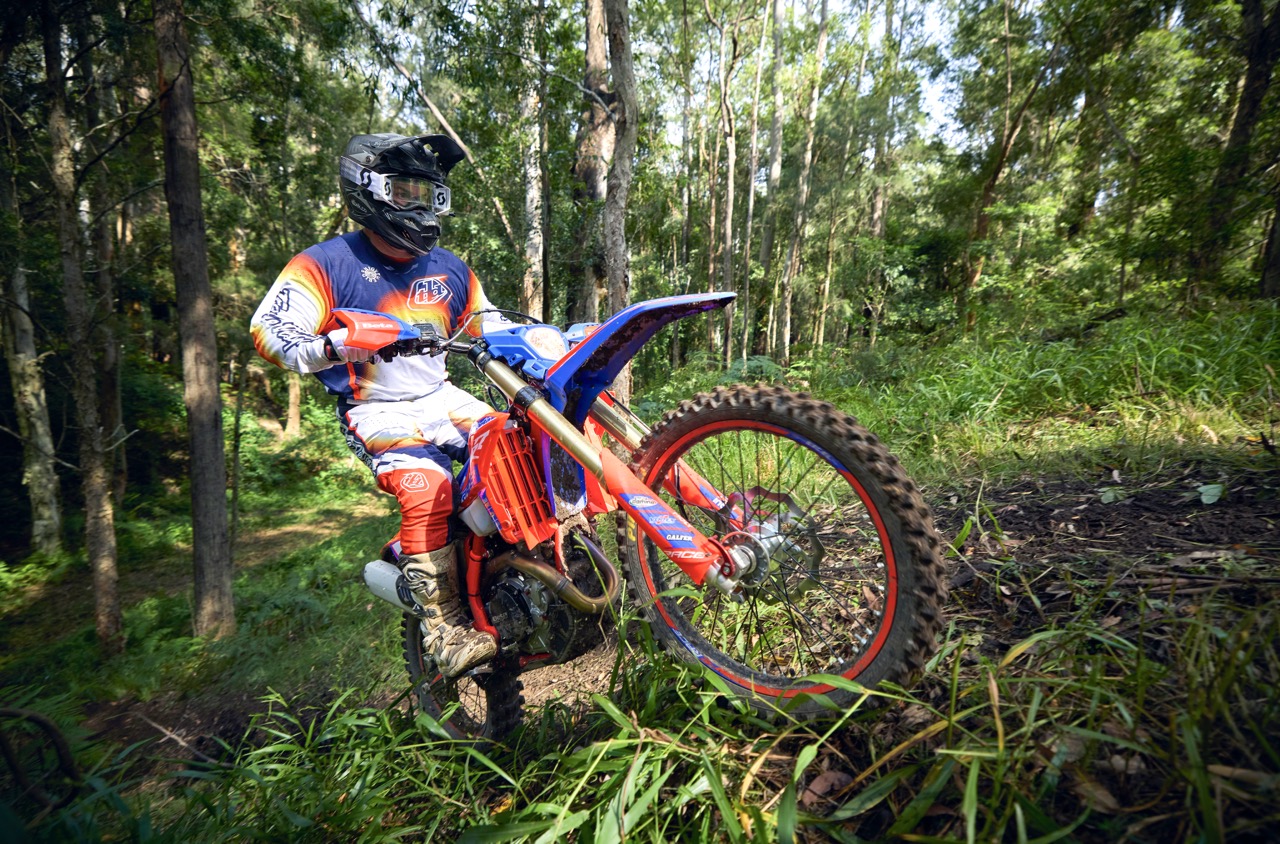When it comes to off-road racing, every few years, something new and exciting pops up on the calendar. While this is fantastic for the sport and means riders now have an opportunity to experience a new format or location, there are a handful of events that just keep going… year after year. New events help grow the sport, but credit needs to be given to the long-held events that continually encourage and attract riders to participate in our great sport and Kamfari is one of those with he 2025 Kamfari living up to the standard.
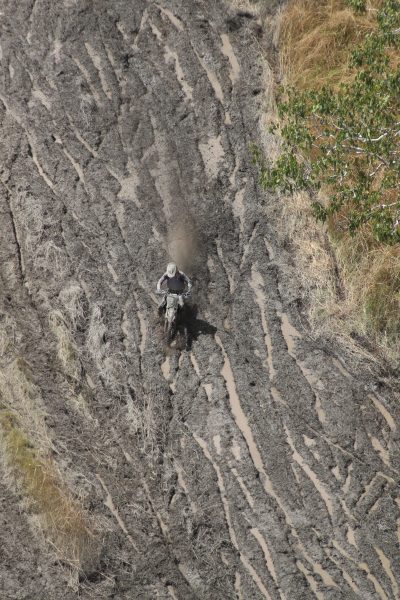
Without doubt, the Finke Desert Race has been the most well known off-road race on the calendar for more than 50 years, but did you know that infamous Kamfari enduro started two years prior back in 1972? Now in its 54th year, the Kamfari is still running strong and attracting competitors from all over Australia. It may not have the numbers of the Finke Desert Race but the challenge just to complete this event would arguably outweigh the challenge to ride there and back. The 2025 results speak for themselves, with just over 60 per cent of the field completing the enduro in the allotted time. If you are looking for a motorcycle (or quad) race to challenge yourself and your machine, then the Kamfari is for you.
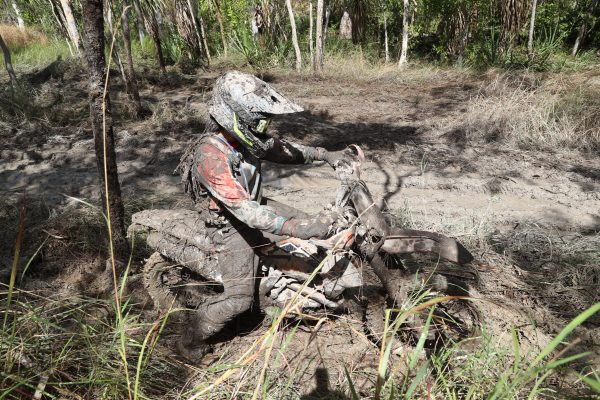
An interesting start
In the late 1960s and early 1970s, the trail rides and enduros held around Darwin all headed out in one continuous loop around the swamps and flood plains, which meant spectators and family only had a chance to see the riders at the start and the finish. The Kamfari was to change this by running riders on a shorter loop that came back past the start/finish area, allowing all the other people involved the opportunity to spectate and enjoy the action. The three men credited with the birth of the Kamfari are sadly no longer with us – Peter Thomsen, Don McCann and Jack Veal came up with the idea after a few discussions at the McCann household. The men had also read about the new Baja 1000 race held in Mexico, where riders competed with no assistance, so this also had an influence on the layout of what would become the Kamfari.
The format for the Kamfari would be a 100 mile race through swamps, looping back through the spectator area, with no assistance other than from fellow competitors and no time limit. Peter Thomsen offered up the use of his land at Kamfari Park and the Kamfari was born.
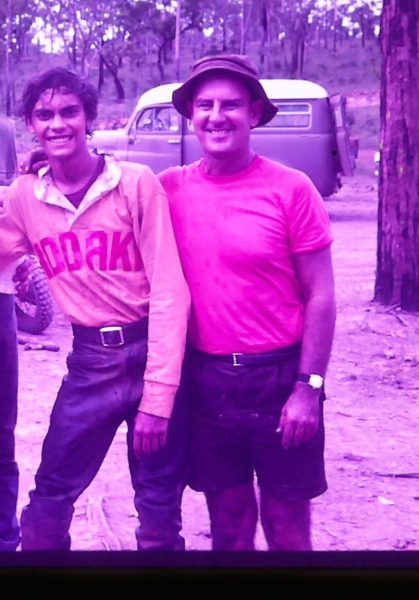
Legacy of a legend
By all accounts Peter Thomsen was a bit of character and this spilled over into the Kamfari when it came time to start the race. Rather than just drop a flag to signal the start, Peter chose a different persona every year to entertain and start the race with, a process that became iconic to the race. One year he came wandering out, catfish hanging from his shirt, advising the riders “it’s a bit wet out there” before pointing his Tennessee Flintlock Shotgun skyward and pulling the trigger, signalling the start of the race. The shotgun starts and characters portrayed by Peter became synonymous with the race.
Fast forward to 2025 and the legacy continues, thanks to Dennis Saunders who carries on the tradition of the shotgun start, as well as wearing interesting costumes every year. For the past 16 years, Dennis has entertained the crowds and riders by dressing up in everything from a prison warden to a disco king in a gold suit. While the shotgun is no longer a flintlock, the same single barrel firearm is used every year. One year, Dennis had some wildlife handlers carry a small crocodile across the line of riders waiting at the start. Riders were advised the croc was found on the track in the morning, but they don’t know where the mother is. That may have been a joke, but this is the Northern Territory, so I am sure there were some interstate riders hoping they didn’t fall off in the water!
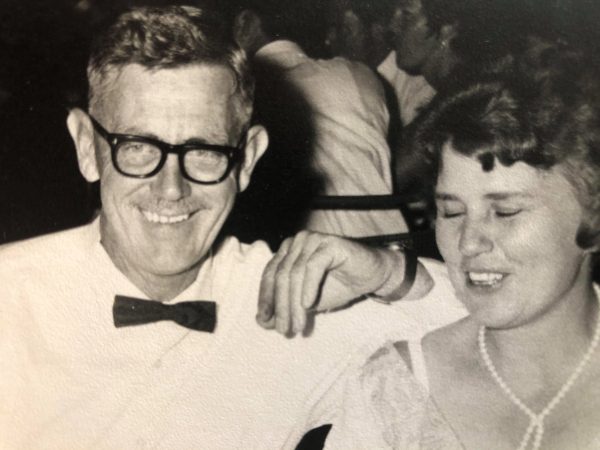
Natural progression
Although the core of the Kamfari has remain unchanged for more than 50 years, there will always be a natural progression. Some changes are made to accommodate technology, some to appease insurance companies, and some to improve the overall event. While today’s Kamfari has quite a few changes from the original, all of them are necessary to maintain the race and keep the tradition going. A few of the changes made in the last 50 years are as follows:
- Peter Thomsen’s Kamfari Park was the start of the event. It subsequently found several new homes over the years, including Marlow’s Lagoon, Gunn Point, Robinson Barracks and it now resides at Cox Peninsula.
- Juniors used to race on a separate track in the early days, however the race is now just for seniors.
- Today’s race is timed – four hours to complete as many laps as possible. The original race was 100 miles with no time limit.
- Quad riders were invited to the event in 2001 and mixed it with the bikes.
- In 2004, the Quads were given their own separate track to race.
- Originally, no assistance was allowed, other than from competitors. In 2021 a change was made to allow one pit crew to assist refuelling bike and rider.
- 2024 saw the addition of the Women’s class
- More stringent rules were put in place to keep spectators safe while enjoying this entertaining race.
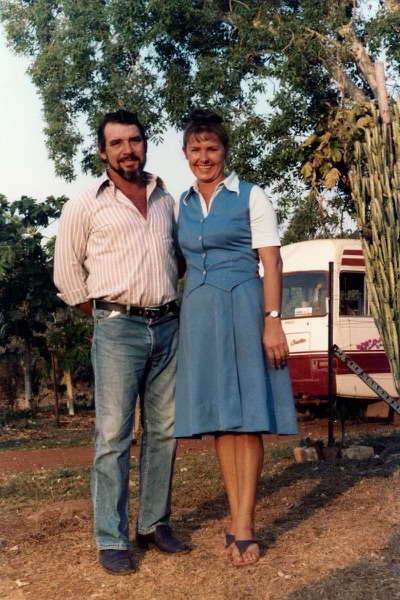
No bull
Even if you don’t follow surfing, the vast majority of people would recognise a surfer holding a wooden trophy containing a bell means that surfer has won Bells Beach. For motorcycle riders, the instant recognition comes when they see a rider lofting a set of buffalo horns overhead; that rider must have won the Kamfari.
There have been a few races throughout the years where riders received some exquisite trophies for winning the Kamfari, but by far the most sought after trophy is the horns. The iconic buffalo horns can also be credited to Peter Thomsen, who back in the 1970s hunted buffalo. He provided a spectacular set of horns for the first Kamfari and this was to be the perpetual trophy that would gather riders names each year as time progressed.
Lyndon Schlein was the first winner back in 1972, so his name was added via a small plaque. However, Lyndon went on to win three in a row! The unwritten rule back in the day was if you win an event three years running, you get to keep the trophy. So that’s the story behind the original set of buffalo horns which now reside with Lyndon in Mildura. Throughout his riding career, Lyndon raced several disciplines and won many championships and trophies. Without doubt, the Kamfari buffalo horns are his most memorable and loved of all trophies.
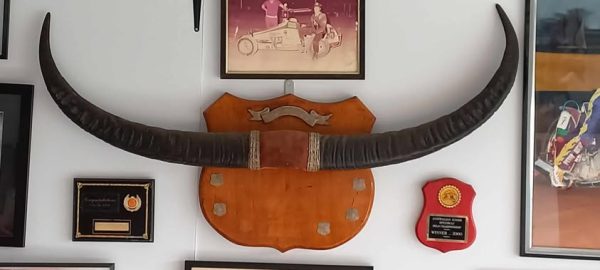
First hand account – John Hickey
In 1972, John Hickey decided to enter the Kamfari on his 1968 BSA Victor Special 441cc motorcycle. Hearing about the deep water, John decided to prepare for it, since this bike was not just his race bike, but his daily transport. The BSA didn’t have the best air intake for a waterlogged off-road event so John put his skills to the test and fashioned up a snorkel. This consisted of an air filter borrowed from the spare parts bin at the drilling site he worked at. It was a bulldozer pilot motor air filter and tube, which was then attached to the rear of the carburettor and fed up past the modified oil tank. The other modification was to remove the lights and mount a paint tin lid to the front of the bike as a number plate.
John describes the race as extremely difficult and each lap was a struggle. “At the end of each lap, I felt like I was nearly dead!” He said. However John managed to finish the race and from his memory, it was in 14th position, which was pretty impressive.
John, you rode to the 2025 Kamfari on his original BSA from the first race. After watching the the race, we asked him how it compares to the Kamfari of 1972?
“You really can’t compare,” John says. “They are all tough. It is very hard to gauge as the bikes they ride today are vastly different from the heavy bikes we rode. Our bikes had less power, less suspension travel and no one was sponsored. We struggled just to buy parts! I have nothing but admiration for the riders I saw today. It has been great to watch and I really love and respect this race.”
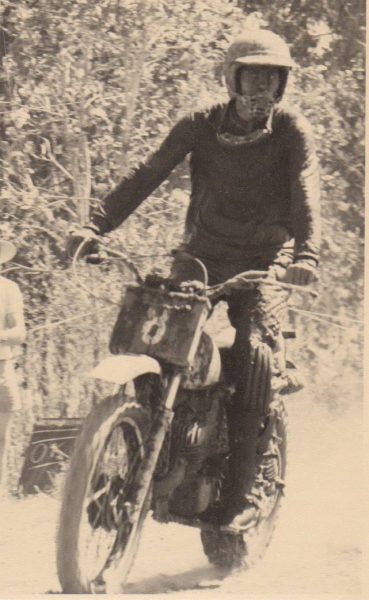
The Flying Freckle
Iconic races like the Kamfari attract all sorts of riders and are often the foundation of some amazing stories. Wayne Tinsley fondly remembers his first Kamfari back in 1998 and was awestruck when he found out motocross legend Jeff Leisk had entered the race. Wayne figured he would only see Leisky on the startline, but 10 minutes into the race, Wayne was struggling in the mud, pushing his bike and he came across the legend Leisk, dewatering his drowned bike. Wayne continued pushing his bike and overtook Leisk. You can imagine how many times that story has been told, especially when Leisk DNF’d and Wayne went on to complete the race! Remember that time I beat The Flying Freckle…
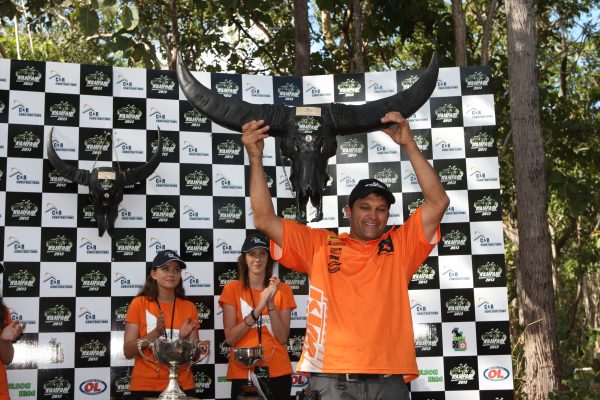
10 from 10
Every long-running event has a King (or Queen) who has taken more wins than anyone else. Kamfari, at this stage, has two. Both Tony Morris and Brad ‘Wonka’ Williscroft have 10 wins each to their name. Morris picked up his wins between 1984 and 1998 and at the time it seemed like a record never to be broken.
But in 2004 Williscroft made the trip to Darwin and won his first Kamfari. It took a few years for Wonka to return, but return he did, taking another nine victories and equalling Morris’s record of 10 outright wins. What sets Wonka apart is the fact he only entered the race 10 times!
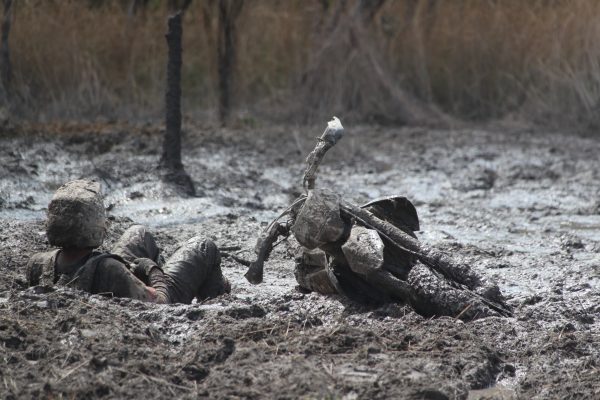
Toughest In Years
One thing the Darwin Motorcycle Club does not have control of is the weather. In recent years, the wet season did not provide enough ground water to make the track super muddy. Now not all the track is mud, and it has been like this since the inception of the race. There is always dry hardpack track to give riders a break from the relentless quagmire of the swamps and flood plains, but the last few years has seen more dust than mud.
But 2025 turned out to be significantly wetter than previous years and this threw up a huge challenge for all riders. Even the top riders struggled and rarely made a complete lap with out getting bogged several times.
Billy McCulloch made the long trip from Victoria to Darwin and was determined to add a Kamfari trophy to the cabinet. Blasting away from the dead-engine start, McCulloch built a convincing lead as the riders headed into the first of the spear grass mud flats. In only his second Kamfari, Tyrone Marcus was on the money, keeping McCulloch in sight and Daniel McInnes behind him, while Chris Warwick showed the skill that has brought him four previous victories. By the fourth mud section, it was all over for McCulloch as the KTM 500 lost power and died, handing the lead to Marcus.
Chris Warwick’s hopes of back-to-back wins started to fade on lap two when a badly bogged Sherco ate up valuable time. Meanwhile William Thurlbeck was making moves after a bad start, slowly working his way through the field. Kade Chapman also suffered from the extreme mud, dropping from third down to 11th in just one lap.
By the two-hour mark, Tyrone Marcus continued to lead 2014 victor Daniel McInnes and was looking good for the win. Anthony ‘Choco’ Charlton had settled into fourth place and was glad his Husaberg had come back to life after refusing to start after a fall in the mud. William Thurlbeck now had a good hold on third place but two hours in the heat and humidity meant it was still anyone’s race.
On lap seven, Marcus’s hopes of winning were dashed. A broken chain guide led to a derailed drive chain and some hasty repairs. McInnes took the lead and eventually lapped Marcus to complete 10 laps in the allotted four hours, taking a well-deserved win. Fortunately Tyrone managed to repair the bike enough to keep hold of second outright and Thurlbeck came home in third outright.
In the Quad category, Richard Mitchell finally got the win, with Gary Burns securing second outright, andGabriel Danen finishing third.
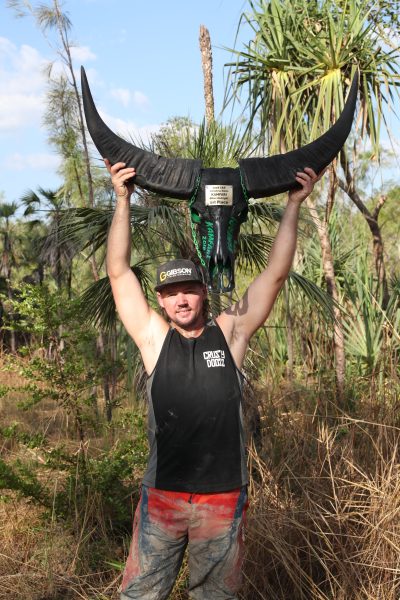
Final Word
Daniel Nagle – President of the Darwin Motorcycle Club
“Kamfari is part of our history and for some it’s the only event they ride all season, year after year,” explains Daniel Nagle. “If we set a good track, we get a tick of approval. But if we set a real Kamfari track – we make history. I’m honoured to be part of the team that allowed our riders to test their limits, pushing mentally and physically in an attempt to be a finisher. Not everyone made it, but the crowd cheered loud and hard for everyone who tried.
“Kamfari provides an epic challenge, bringing together our community and celebrating the bravery and heart of our riders. It’s why after 54 years, Kamfari continues to live on.
THANKS
Thanks to the following people for their input in researching this article:
- Peter Thomsen (Jnr)
- Brett Thomsen
- Stephen McCann
- Lyndon & Lynette Schlein
- Clint Holmes
